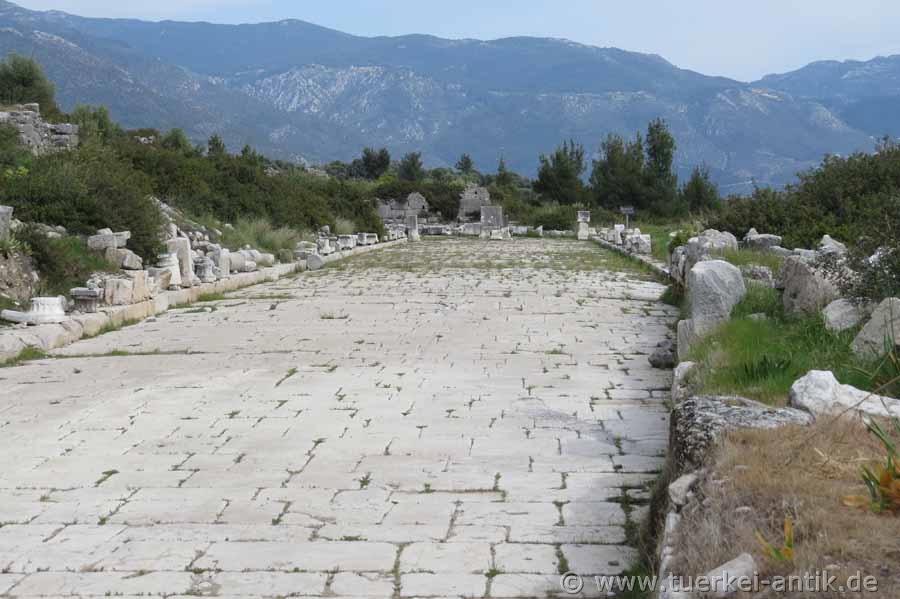 |
| Xanthos | |||
|
|
|
||
 |
|||
| The Colonnade Street | |||
|
The history of Xanthos spans almost 1800 years and is marked by the struggle for independence. At the head of the Lycian League and during the Roman Empire, the city gained special importance. It was rediscovered in 1838 by the English archaeologist Charles Fellows - since then many finds are in the British Museum in London. |
|||
|
|
|||
| Lycian pillar tombs at the theatre | |||
|
The ancient city of Xanthos and the associated temple district of Letoon are the capital and federal shrine of the Lycian Covenant in the centre of Lycia's history. Besides important remains of temples and urban buildings, Xanthos stands for a number of unique Lycian monuments whose tombs, pillar tombs and sarcophagi are richly decorated with reliefs and sculptures. Xanthos and Letoon are located about 65 km southeast of Fethiye and have been a UNESCO World Heritage Site since 1988. In the meantime there are certain indications (Yalburt inscription) that the place already existed as Awarna, the important centre of Arzawa, in the times of the Lukka lands (ca. 2000 to 1200 BC). |
|||
|
|
|||
| The Theatre | |||
|
Already inhabited since the 8th century, this city only enters history in Herodots description of the events of the year 545 B.C.. In a desperate defensive battle against the troops of the Persian general Harpagos, the Lycians retreated to the fortified city and entrenched themselves. The men gathered their wives, children, slaves and all property in the castle of the Acropolis and burned it down completely. Determined, they dared a failure in which all were killed by the Persians. Only 80 families, according to Herodotus, survived because they were outside the city at the time of the Persian attack. |
|||
 |
|||
| The Lykisan Acropolis | |||
|
Ein another great fire was the result of the Athenian conquest of Xanthos around 470 BC by the general Kimon. The following dependence on Athens was ended by the Persian city prince Kherēi 429 B.C. with a victory over another fleet expedition of Athens, which was led by Melesandros and fell in battle. This triumph is described by the inscription pillar of Xanthos (see below). |
|||
|
|
|||
| The inscription pillar with Lycian inscription | |||
|
In the following 100 years, Xanthos flourished under loose Persian sovereignty - the city area was extended and the preserved splendid tombs and monuments were created. Conquered in 334/333 BC by Alexander the Great, the city soon came under the rapidly changing reigns of the subsequent Diadoch empires. 188-168 B.C. was the city under the rule of Rhodes. From then on Xanthos headed the Lycian Confederation and maintained friendly contacts with Rome.
|
|||
|
|
|||
|
|
|||
|
On the Eastern Agora from Roman times |
|||
|
You can reach Xanthos via the coastal road D400 between Fethiye and Kaş. Coming from Kaş, about 6 km after the village Yeşilköy, near the village Ova, the Xantos Yolu branches off, which leads almost directly to Letoon. Coming from Fethiye turn off the D400 about 4 km, at the village Kınık at the brown sign to Xanthos. |
|||
| Photos: @chim, Monika P. | |||
| Translation aid: www.DeepL.com/Translator | |||
| Source: Wikipedia and others | |||
|
|
|||



